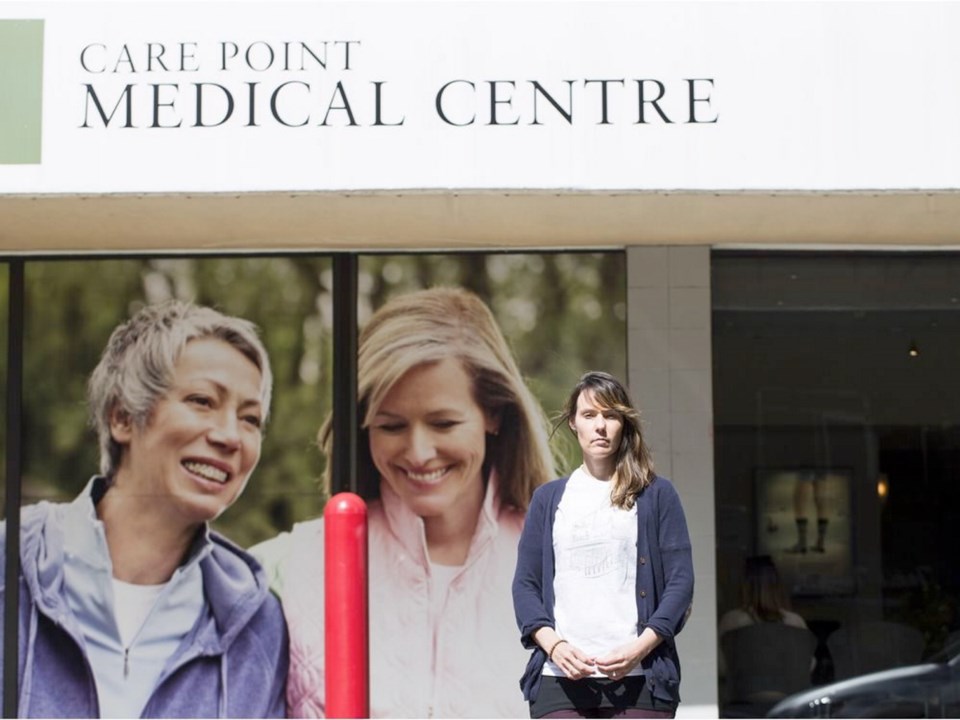The number of vacancies for physicians in B.C. is believed to have reached a historical high, with nearly 700 positions listed by Health Match B.C., the provincial agency that recruits health professionals from around the world.
And if last year’s recruitment is any indication, only about a third of the doctors will be found. Last year, it filled 234 vacancies — 192 on a permanent basis and 42 locum (temporary) positions. Of the 667 postings listed now (the number fluctuates on a daily basis), 447 are in family medicine.
Data provided by the Ministry of Health shows constantly escalating vacancies for the past four years, particularly for general practitioners.
This comes as no surprise to West End resident Susan Stewart, who has been using walk-in clinics for the past six years since her doctor retired.
“Every time I ask for a referral, I’m referred to the websites,” said Stewart, 41, who is forced to wait in line to see a doctor each time at her local Care Point Medical Centre on Davie. “And after doing some research on the doctors I find there, I call the offices to ask about availability and I’m told that some of the doctors on the list aren’t taking patients.”
At the clinics, Stewart added, she sees a host of different doctors but doesn’t “get that familiarity that you get from a regular family doctor. For some things it’s a concern because you like to have a doctor-patient relationship with someone who knows your history instead of having to repeat it every single time to a new doctor.”
John Mabbott, executive director of Health Match B.C., acknowledges the list of vacancies is significant. According to the latest (2015) report from the Canadian Institute for Health Information, there were a total of 10,692 doctors in B.C. in 2014. The College of Physicians and Surgeons of B.C. says there were 11,574 doctors in B.C. as of February 2015.
Both Mabbott and Sarah Plank, communications director for the ministry of health, attributed the vacancies in community clinics and hospitals to an aging population that is creating more demand for medical services as well as the fact that younger doctors are working fewer hours as they seek more work-life balance than generations of doctors before them.
“Younger doctors are not working 70-hour work weeks,” Mabbott said, adding that female doctors — a growing proportion of the medical profession — also tend to take more time off because of family commitments. Such furloughs create more need for locums.
Plank said that in the first quarter of 2016, Health Match filled 80 physician vacancies (60 permanent and 20 locum positions). Eighty is the highest number of jobs filled in a quarter in four years, she noted.
Dr. Alan Ruddiman, president of Doctors of B.C., said B.C. is now facing “the perfect storm” with an aging medical workforce (average age 54) and an aging population needing doctors more than ever.
“When I first came to Oliver to practice family medicine 20 years ago, I took over a practice in which the average patient was 63 years old. Now it is 76,” he said. “Patients living longer have more complex conditions and this is putting more demands on doctors.”
He said doctors have been pressuring health authorities for years to come up with physician supply plans. “Otherwise, it’s a crapshoot trying to predict where we need doctors and how many.”
The health ministry is finally preparing such a plan, he noted.
Foreign-trained medical graduates, including the 100 or so B.C. residents who each year graduate from medical schools outside Canada, could help fill vacancies. According to the College of Physicians and Surgeons of B.C., about 200 foreign (international medical graduates) doctors are deemed eligible for registration and licensure if they meet certain criteria. But there are only 58 funded residency spots for such graduates.
Ruddiman said one of his goals as president is to “chip away” at how to increase the numbers of jobs for Canadian medical graduates who train overseas and want to come back here to work.
“It’s like turning a big tanker around,” he said, referring to the fact that Canadians have to compete against non-Canadians who also trained overseas and there are only so many postgraduate residency spots. They are also required to prove their education was similar and at least equal to the education they would have gained in Canada.
For many British Columbians, the first step in the hunt for a family doctor is the College of Physicians and Surgeons’ Find a Physician online search tool.
A few quick queries reveal that rural residents aren’t the only ones having trouble finding GPs. In Kamloops, the province’s eighth-largest city, not one of its 118 practising family doctors is accepting new patients.
The situation is the same in Victoria, Abbotsford, Nanaimo and Kelowna. In Burnaby, just three family doctors have space for new patients; in Richmond, that number is two.
For those desperate for a family doctor, it means possibly long waits at walk-in clinics. Stewart says her wait time “can be anywhere from one to three hours depending on the time of day.”
Ameez Allidina, who also visited the Care Point clinic Wednesday, said he hasn’t bothered looking for a family doctor because people he works with have told him it’s virtually impossible.
“The last time I had a doctor was seven or eight years ago (after a move from Ladner). It’s disheartening,” said the 37-year-old. “The lineups (at the clinic) are pretty long in general.”
Mary Powell, a 66-year-old West End resident, said she times her visit to the walk-in clinic so she can continue to see the same doctor. She said she phones ahead and asks the receptionist when her doctor is in, and heads down to the clinic to see him.
“You pick a window when he’s there. I’ve done this for three weeks and it’s worked out well,” she said.
Powell said her waits can be between one to three hours.



